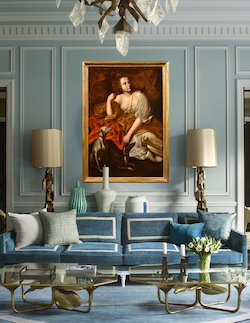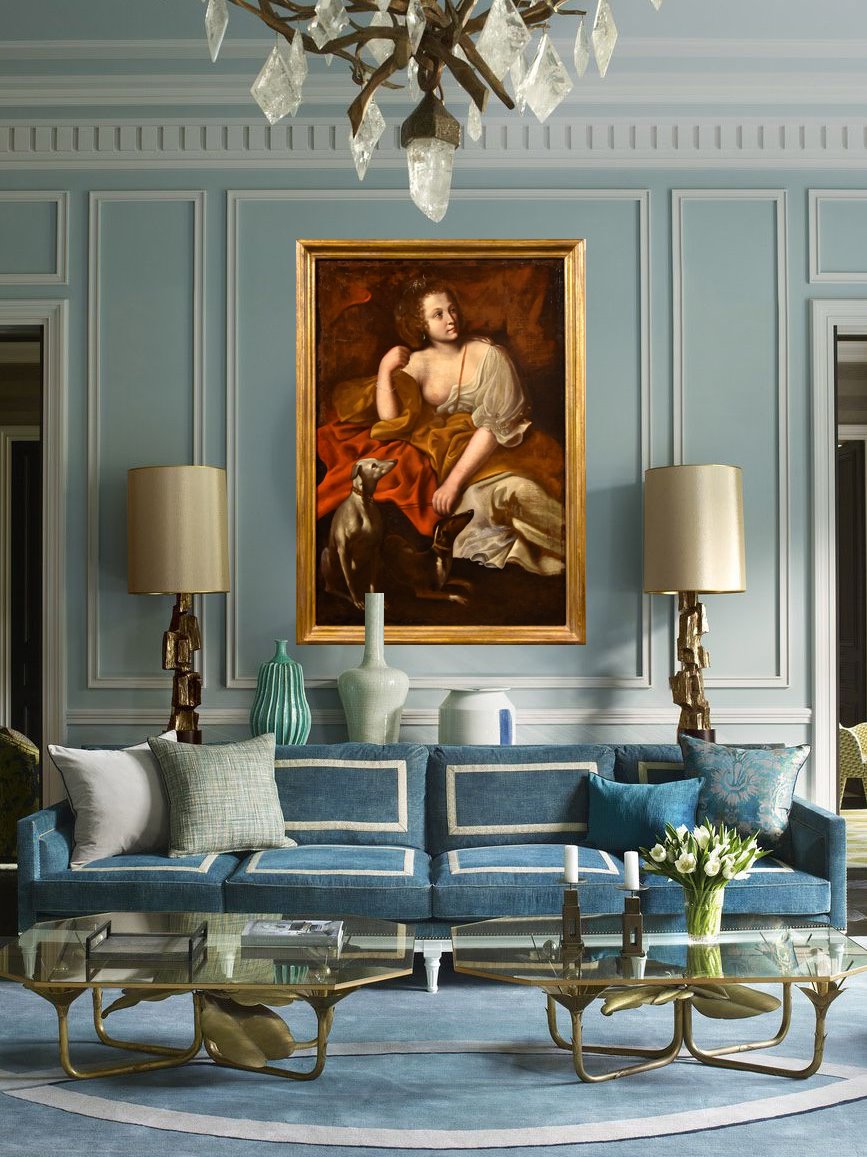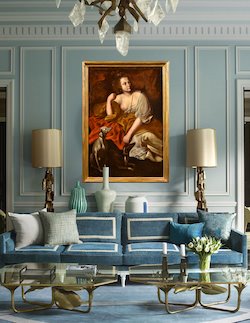Diana cacciatrice con i suoi levrieri
Giovanni Francesco Guerrieri (Fossombrone, 1589 – Pesaro, 1657), Attribuibile a
Caravaggesque painter of the seventeenth century
Attributable to Giovanni Francesco Guerrieri (Fossombrone, 1589 - Pesaro, 1657)
Diana the huntress with her greyhounds
Oil on canvas
104 x 70 cm.
In frame 115 x 82 cm.


A beautiful Diana, a Roman deity of hunting and birth, is masterfully immortalized in this fine painting, accompanied by two of her faithful greyhounds.
Portrayed as an attractive young girl with strong sensuality, mischievously naked with part of her breast uncovered, she is also identified with the lunar divinity Selene, as suggested by the attribute of the crescent moon that shines among the pearls that adorn her hair.
The splendid twist of the woman's bust is further emphasized by the figure of the greyhounds at her side, which not only act as a mere, albeit essential, iconographic attribute, but rise to the role of true supporting actors of the composition and with that instinctive movement of the neck they seem to want to participate to the curiosity of the mistress.
In Baroque painting the hunting dog, given its innate elegance, became an indispensable symbol of prestige and ostentation for the aristocracy, with the result of often appearing in noble portraits; it was also a harbinger of a predominantly allegorical meaning, as a personification of noble sentiments such as friendship and fidelity.
The work, which manifests an interesting expressive power, testifying the painter's taste for a marked naturalism, returned through a suggestive mix of influences drawn from both the Caravaggesque and Flemish worlds.
It is therefore not surprising that the canvas, which can be placed within the mid-seventeenth century, is attributable to Giovanni Francesco Guerrieri (Fossombrone, 1589 - Pesaro, 1657), a leading figure in the seventeenth-century painting of the Marche, creator of an extraordinary figurative culture, rich in Flemish experiences , Tuscan and Roman, with reminiscences that lead us to the Caravaggism of Orazio Gentileschi.
In our opinion, the canvas in question could probably be traced back to one of the Roman stays of the master from the Marches, who was present several times in the papal city, such as in the period when he was specifically called by Prince Marcantonio Borghese to decorate some rooms of Palazzo Borghese in Campo Marzio (around 1617), devising large profane-themed decorations, with Sibyls and mythological figures, made with the help of numerous collaborators, many of whom are Flemish.
Conservation status:
The canvas is in good condition with some signs of aging along the edges that do not affect the perfect reading of the subject.
ADDITIONAL INFORMATION:
The work is sold with a certificate of authenticity and a descriptive iconographic card.
We take care and organize the transport of the purchased works, both for Italy and abroad, through professional and insured carriers.
It is also possible to see the painting in the Riva del Garda gallery, we will be happy to welcome you to show you our collection of works.
Contact us, without obligation, for any additional information.
Follow us also on:



